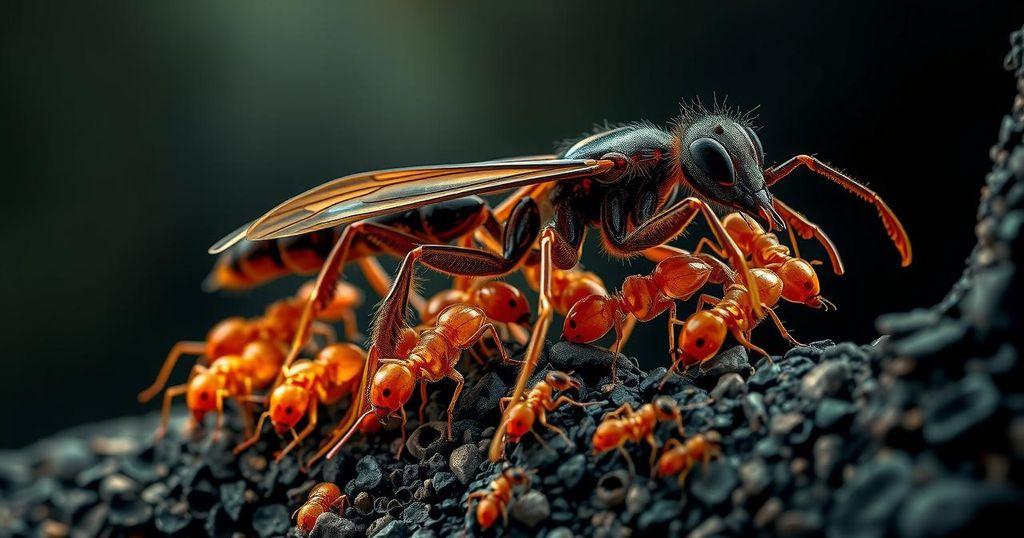Ancient Termite Colony: Insights into Ecosystem Engineering and Climate Change Mitigation
The discovery of a 34,000-year-old termite mound in South Africa has revealed insights into climate change mitigation and biodiversity. Soil scientists unearthed organic matter that highlights the role of termites as ecosystem engineers, enhancing soil quality and contributing to carbon sequestration. This challenges the perception of termites as mere pests, emphasizing their importance in ecological functions and potential climate solutions.
On a September morning in Buffelsrivier, South Africa, soil scientists Cathy Clarke and Michele Francis, along with graduate students, excavated a substantial trench through a vast ancient termite mound, known locally as a heuweltjie. This excavation was part of an investigation into the region’s saline groundwater. Upon exploring the site, they were taken aback by the sight of an ancient, thriving termite nest, revealing that these insects had been industrious architects for thousands of years. Radiocarbon dating of the nest exposed that the mound contained organic material dating back at least 19,000 years, while some mineral components were dated to approximately 34,000 years old, predating the last Ice Age. The research highlighted that southern harvester termites play a significant role as ecosystem engineers, greatly influencing local biodiversity. These insects, primarily feeding on plant material, enhance soil composition by redistributing organic matter through their tunneling activities. Clarke noted that “the termites are one of the reasons for the Namaqualand’s incredible biodiversity.” The mound formations, while visually distinct, contribute to both soil fertility and the creation of diverse habitats. Unexpectedly, the project revealed insights into the role of termites in carbon sequestration. As termites deposit organic matter at varying depths, the resulting carbon is less prone to atmospheric release, functioning as a long-term carbon sink. Furthermore, the biological decay of termite waste promotes calcium carbonate formation, a stable carbon form, bolstering the mound’s contribution to carbon storage efforts. As researchers expanded their understanding of these insects, they advocated for reassessing the perception of termites from mere pests to vital contributors in combating climate change. Clarke emphasized the need to integrate termite activity into carbon models, which have traditionally overlooked them. Importantly, Clarke and Francis’s findings are promising, highlighting that there may be even older colonies waiting to be discovered in other regions, potentially offering further insights into these fascinating insects’ ecological significance.
The article addresses the discovery of the world’s oldest termite colony in South Africa, which has been identified as playing a crucial role in local ecosystems and climate change mitigation. The excavation carried out by scientists not only unearthed ancient organic matter but also provided a deeper understanding of the contributions of termites to soil composition and biodiversity. The research emphasizes the significance of these insects beyond their conventional image as pests, showcasing their role in carbon sequestration and soil fertility.
In conclusion, the excavation of the ancient termite mound in Buffelsrivier presents groundbreaking insights into the ecological importance of termites over millennia. The soil scientists’ findings underscore the dual role of these insects as both architects of their environment and significant contributors to carbon storage, suggesting a need for a reevaluation of their role in ecological studies and climate change strategies. Their complex societies and long-term impacts on biodiversity reveal the necessity of recognizing termites as vital components of their ecosystems and the broader environment, warranting further research efforts into their practices and contributions.
Original Source: www.aljazeera.com




Post Comment